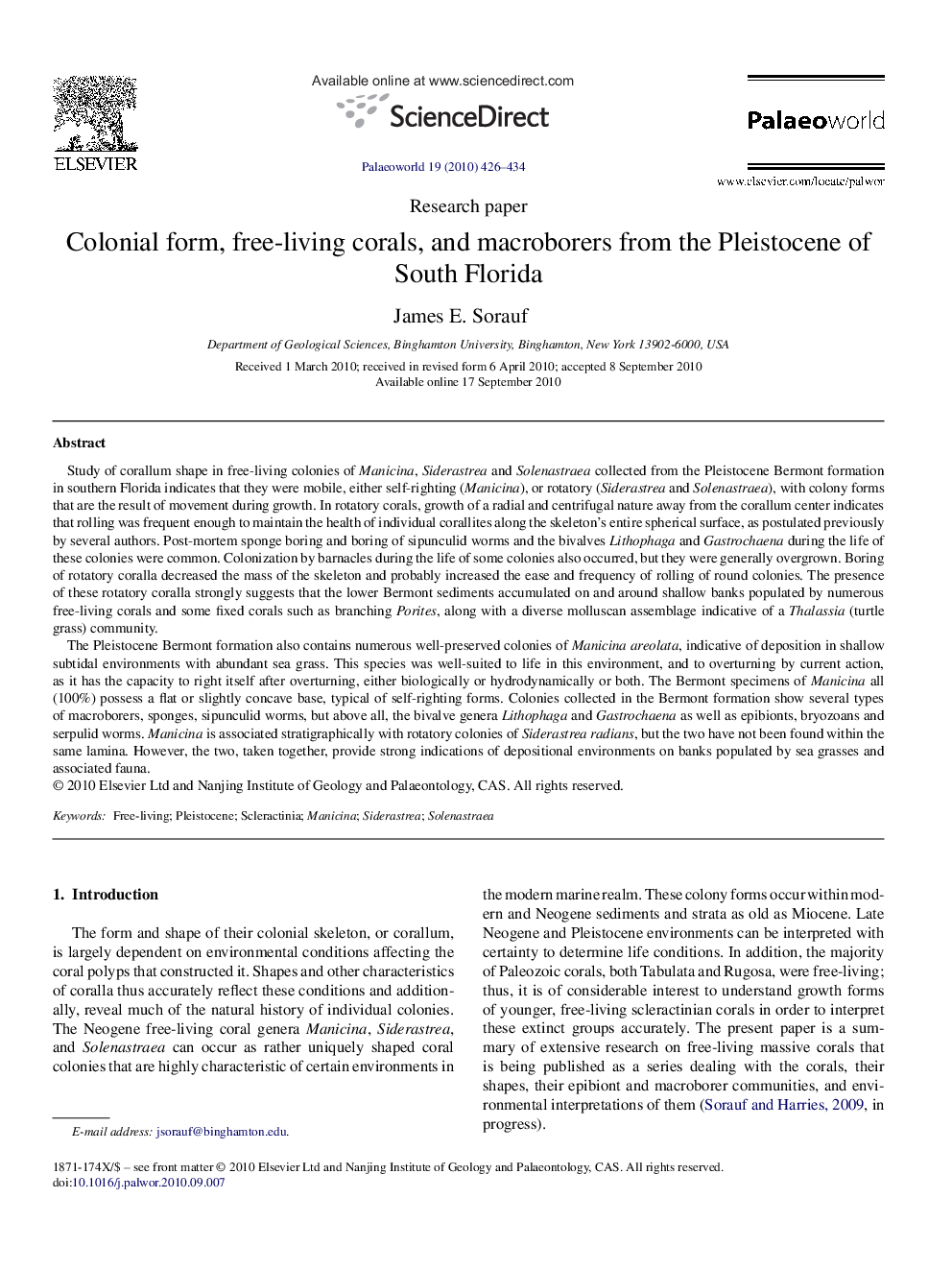| کد مقاله | کد نشریه | سال انتشار | مقاله انگلیسی | نسخه تمام متن |
|---|---|---|---|---|
| 4749841 | 1642282 | 2010 | 9 صفحه PDF | دانلود رایگان |

Study of corallum shape in free-living colonies of Manicina, Siderastrea and Solenastraea collected from the Pleistocene Bermont formation in southern Florida indicates that they were mobile, either self-righting (Manicina), or rotatory (Siderastrea and Solenastraea), with colony forms that are the result of movement during growth. In rotatory corals, growth of a radial and centrifugal nature away from the corallum center indicates that rolling was frequent enough to maintain the health of individual corallites along the skeleton's entire spherical surface, as postulated previously by several authors. Post-mortem sponge boring and boring of sipunculid worms and the bivalves Lithophaga and Gastrochaena during the life of these colonies were common. Colonization by barnacles during the life of some colonies also occurred, but they were generally overgrown. Boring of rotatory coralla decreased the mass of the skeleton and probably increased the ease and frequency of rolling of round colonies. The presence of these rotatory coralla strongly suggests that the lower Bermont sediments accumulated on and around shallow banks populated by numerous free-living corals and some fixed corals such as branching Porites, along with a diverse molluscan assemblage indicative of a Thalassia (turtle grass) community.The Pleistocene Bermont formation also contains numerous well-preserved colonies of Manicina areolata, indicative of deposition in shallow subtidal environments with abundant sea grass. This species was well-suited to life in this environment, and to overturning by current action, as it has the capacity to right itself after overturning, either biologically or hydrodynamically or both. The Bermont specimens of Manicina all (100%) possess a flat or slightly concave base, typical of self-righting forms. Colonies collected in the Bermont formation show several types of macroborers, sponges, sipunculid worms, but above all, the bivalve genera Lithophaga and Gastrochaena as well as epibionts, bryozoans and serpulid worms. Manicina is associated stratigraphically with rotatory colonies of Siderastrea radians, but the two have not been found within the same lamina. However, the two, taken together, provide strong indications of depositional environments on banks populated by sea grasses and associated fauna.
Journal: Palaeoworld - Volume 19, Issues 3–4, December 2010, Pages 426–434